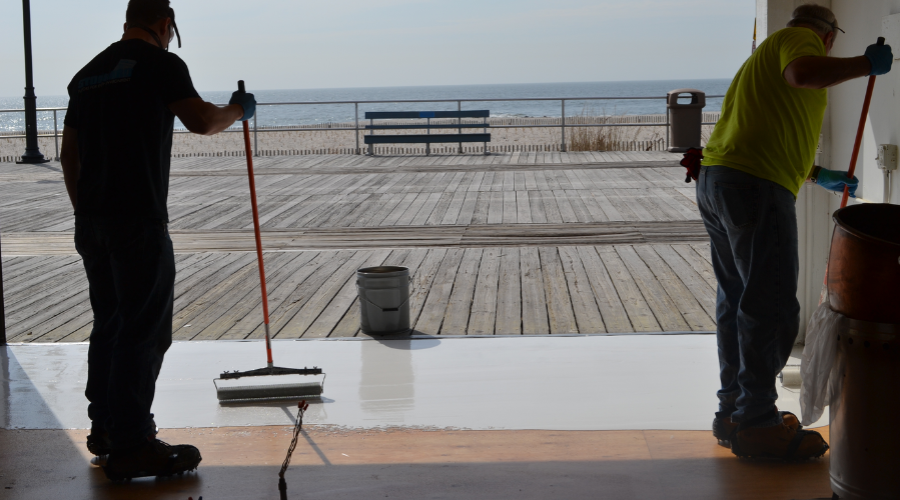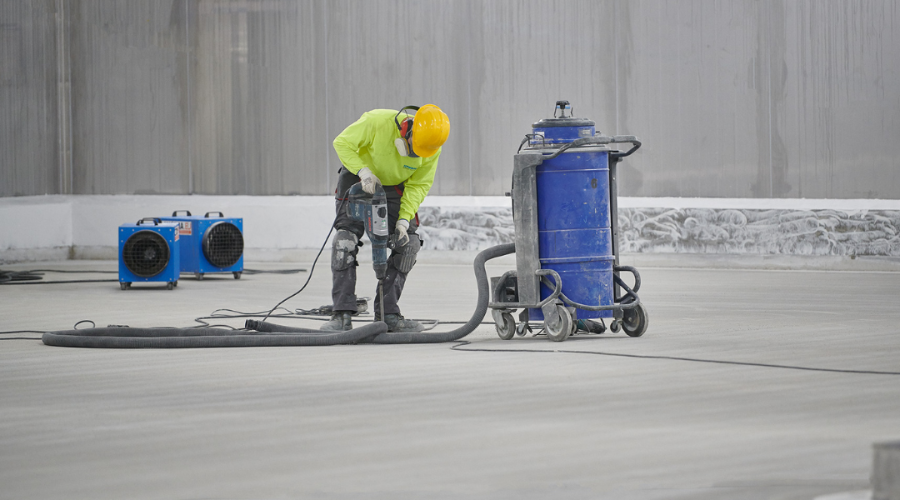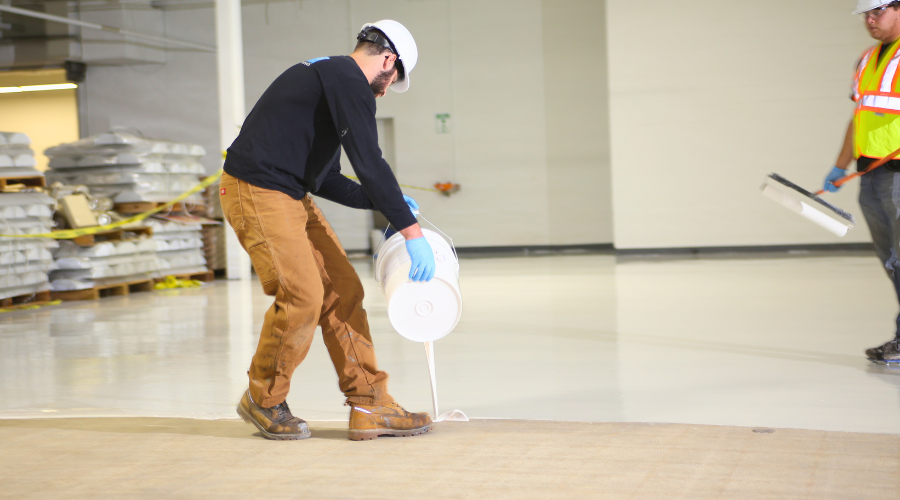Table of Contents:
Table of Contents:
Watch the video:
How to Prepare Floors for Resinous Flooring
Before applying epoxy and urethane coating, floors need to be prepped. There are three main steps in the process.
Removing Laitance from the Concrete Substrate
One of the most important aspects of a successful resinous floor installation is the preparation of the concrete substrate. In order to ensure a successful bond to a concrete substrate, all laitance (the weak, brittle layer that forms on the surface of concrete during its cure) needs to be removed from the surface.
The two most common methods for concrete preparation are:
- Media blasting the concrete
- Grinding the surface with diamond wheels
Other ways of surface preparation include scarification and utilizing chipping hammers/guns, but these methods are generally used when removal of an existing system is required.
In most cases, the minimum required concrete surface profile (CSP) is level three for resinous flooring applications. A CSP-3 is easily obtained when media blasting, but grinding using special PCD wheels can be used to achieve a similar profile. The more aggressive the surface profile, the better the mechanical bond will be between the substrate and the epoxy primer.
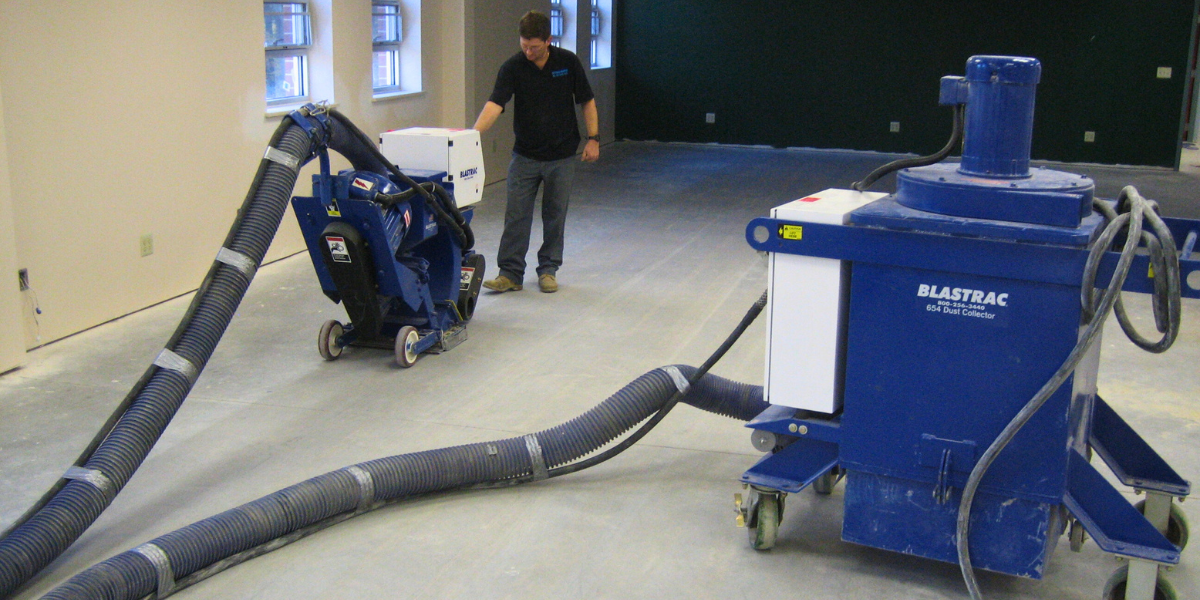
Preparation is key: properly grinding and cleaning the concrete floor ensures a strong bond and a flawless finish.
Addressing Cracks After Concrete Cures
Just about all concrete shrinks during its cure. As a result, small cracks called “shrinkage cracks” will occur. After the concrete substrate is prepared, cracking in the slab will be most obvious. The various types of cracking will need to be addressed depending on the thickness of the resinous system that is being installed.
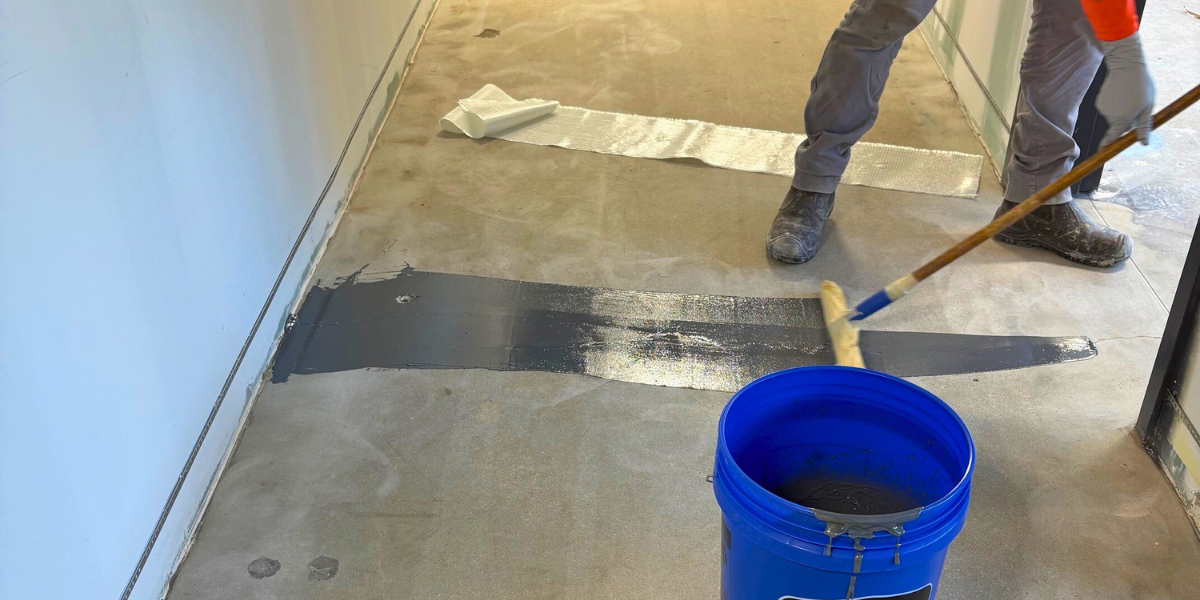
Even after curing, cracks in concrete can appear due to shrinkage or settling. Addressing these issues early is crucial for long-term durability.
Testing Concrete for Contamination
Contamination may also need to be addressed when preparing a concrete substrate. Concrete can act as a sponge if it is not sealed or coated, so if contaminants were spilled on its surface, they may have been absorbed. A water drop test is a quick and easy way to determine if you have a contaminated slab. Pour some water on the surface of the slab, if it is absorbed, you don’t likely have a contamination issue. If the water beads and doesn’t absorb into the surface, there could be an issue. If contamination is a concern, the use of degreasers and special primers may be required after the surface has been prepared.
About Stonhard
Stonhard is the unprecedented world leader in manufacturing and installing high-performance polymer floor, wall and lining systems. Stonhard maintains 300 territory managers and 200 application teams worldwide who will work with you on design specification, project management, final walk-through and service after the sale. Stonhard’s single-source warranty covers both products and installation. Contact us to learn more about our precision installation methods and specialized products.
Related Articles
Loving this Content?
Subscribe to upcoming topics!


